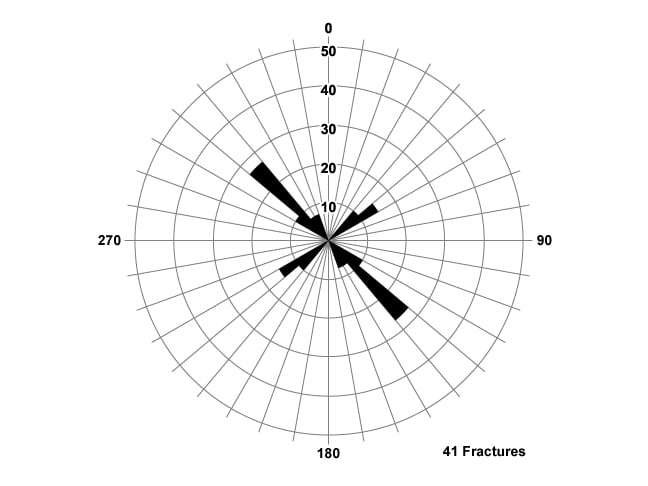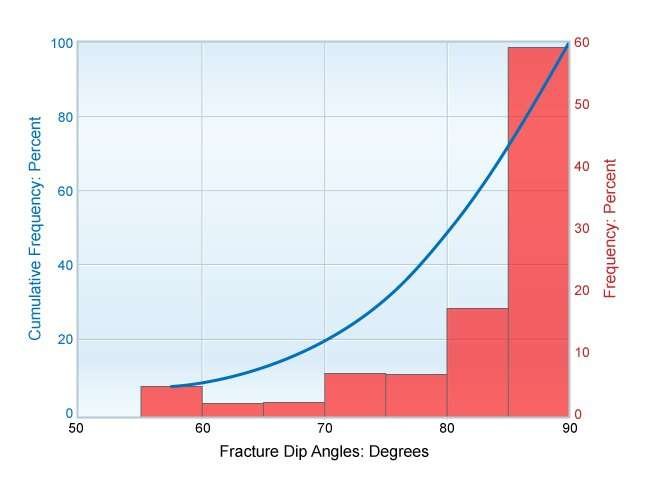Detailed Fracture Studies
The objective of detailed, natural fracture studies is to carefully describe the nature and degree of natural fractures in recovered full diameter cores (Figure 1).

These data are subsequently used to:
- Locate development wells with favorable fracture permeability.
- Determine the optimal direction of horizontal and multi-lateral development wells in unconventional reservoirs requiring fracking (Sonnenberg, 2012).
- Assist in the planning of well completion and stimulation by identifying fracture intervals.
- Evaluate fracture-finding well logs and correlate them with actual rock fracture conditions.
- Assist in the structural analysis of hydrocarbon accumulations as they relate to fault orientation and location.
- Assist in the calculation of the theoretical block height and cross-sectional area of matrix fracture blocks for mathematical modeling.
To obtain valid fracture data, good core handling procedures (London Petrophysical Society, 2012) must be used at the wellsite. Care should be taken to avoid breaking the rock excessively and to fit it properly together prior to marking (Figure 1). The core must be spatially oriented to be of maximum benefit to the study. This can be accomplished by coring with an orientation tool (Devico, 2014), or by aligning the visible core bedding dip with the formation dip as identified either by a dipmeter or by regional geological information.
After the core is properly orientated, both the dip and strike of the observed fractures are recorded. An example of such a recording is the rose diagram shown in Figure 2, which shows a well with a major fracture trend striking in a northwest to southeast direction, with a secondary trend at right angles to it.

Figure 3 is a histogram demonstrating that a large majority of the fractures found in this well occur at dip angles of 50º or greater.

It is common practice to record all the observed fracture data on a core fracture log. Such a log displays the fracture depth, length, frequency, density per foot and dip, together with the lithology and rock hardness, on a foot-by-foot basis. In addition, the log records the core porosity and matrix oil saturation. The latter data are of particular importance in thick carbonates that display wide variations in their rock properties and whose zones of oil saturation are sporadic, appearing and disappearing at different depths.
 Petro Shine The Place for Oil and Gas Professionals.
Petro Shine The Place for Oil and Gas Professionals.



